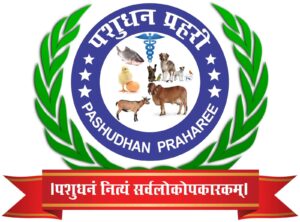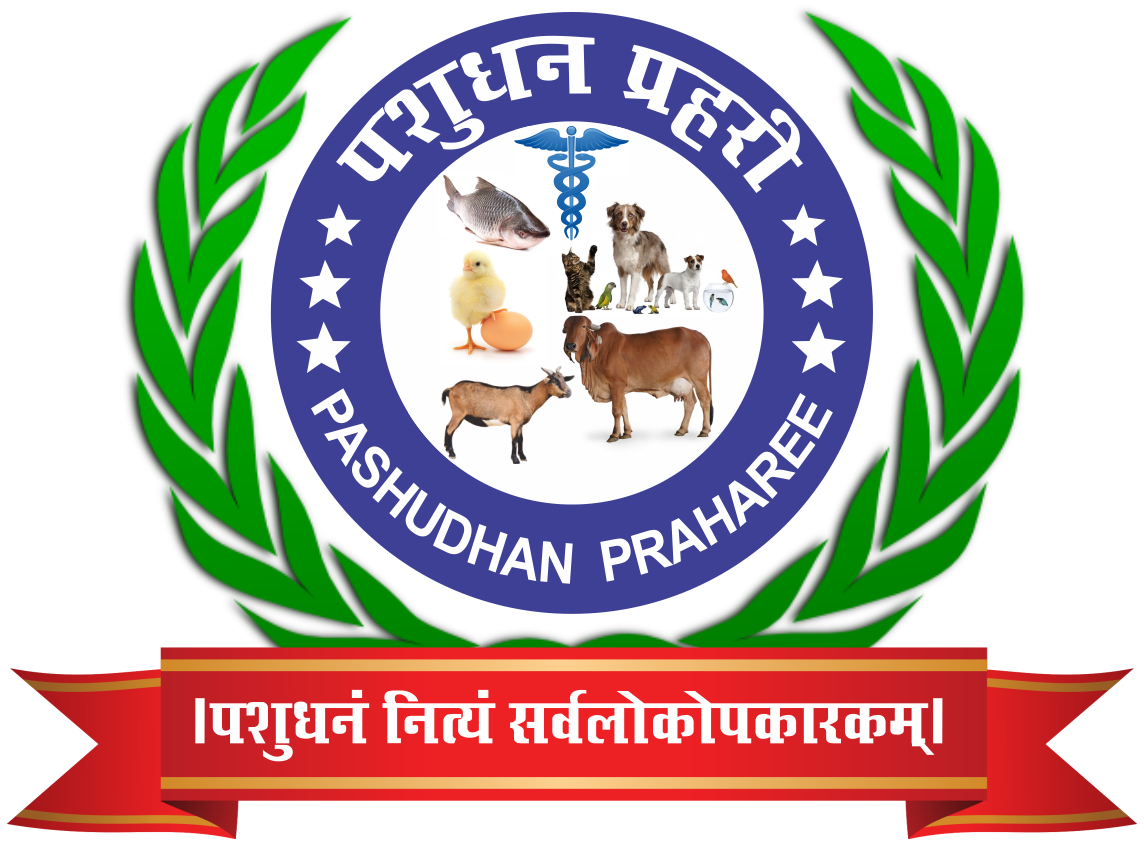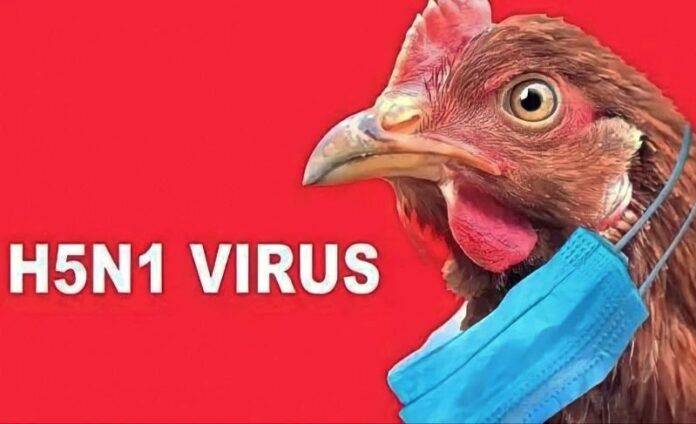Avian Influenza A (H5N1) in India: Why Poultry, Dairy & Pet Owners Should Trust Facts Over Rumors
The recent reports of Avian Influenza A (H5N1) affecting poultry, dairy cattle, pets, and wildlife have sparked widespread concern across India. Social media is flooded with misinformation, causing unnecessary panic among consumers and livestock farmers. However, it is crucial to separate facts from fear. Scientific evidence confirms that properly cooked poultry and pasteurized dairy products remain safe for consumption, and no human infections have been reported in India due to dairy cattle. Instead of falling for fake news, stakeholders should rely on government advisories, follow safety guidelines, and support the livestock sector responsibly.
The recent outbreak of Avian Influenza A (H5N1) in dairy cattle, pets, and wildlife has raised significant concerns worldwide. Initially known as a virus affecting birds, H5N1 has now crossed species barriers, posing risks to animal health, food security, and public health. The emergence of infections in mammals increases the potential for viral mutations and the risk of zoonotic transmission.
Avian Influenza A (H5N1) virus is a highly pathogenic strain primarily affecting birds but has recently been detected in dairy cattle and some pet animals. This has raised concerns about its potential impact on animal health, public health, and the dairy industry. Let’s debunk the myths and focus on informed precautions rather than panic!
H5N1 in Dairy Cattle
Detection and Transmission
-
- In 2024, cases of H5N1 were reported in dairy cattle in the United States.
- The virus was detected in unpasteurized milk samples and nasal secretions of infected cows.
- Transmission is suspected to occur through direct contact with infected birds, contaminated feed, or farm equipment.
- No evidence of widespread cattle-to-cattle transmission has been confirmed.
Symptoms in Dairy Cattle
-
- Reduced milk production
- Thick or abnormal milk consistency
- Fever
- Lethargy
- Loss of appetite
Impact on Dairy Industry
-
- Potential economic losses due to decreased milk yield and quality.
- Need for stringent biosecurity measures on farms.
- Concern about zoonotic (human) transmission risks through direct animal contact or contaminated milk.
H5N1 in Pets
Detection and Transmission
-
- H5N1 has been reported in domestic cats, likely infected by consuming raw dairy products or contact with infected birds.
- Some cases of dog infections have also been noted.
Symptoms in Pets
-
- Respiratory distress
- Fever
- Neurological signs (e.g., tremors, seizures)
- Lethargy and loss of appetite
Risk to Humans
-
- While rare, human infections with H5N1 can occur through direct exposure to infected animals or contaminated products.
- Proper handling of dairy products and avoiding raw milk consumption are recommended to reduce risk.
Prevention and Control Measures
-
- For Dairy Farms:
- Enhanced biosecurity (bird-proofing, hygiene, restricted farm access).
- Surveillance and testing of cattle showing symptoms.
- Pasteurization of milk to eliminate virus presence.
- For Pet Owners:
- Avoid feeding pets raw dairy products or raw meat from infected animals.
- Prevent contact between pets and wild birds.
- Monitor pets for symptoms and seek veterinary care if needed.
- For Dairy Farms:
H5N1 in Wild Birds
Detection and Transmission
- Wild waterfowl (ducks, geese, and swans) serve as natural reservoirs of the virus.
- The virus spreads through contaminated water, feces, and direct contact with infected birds.
- Migratory birds play a crucial role in the global spread of H5N1 across continents.
Symptoms in Wild Birds
- Neurological issues (tremors, head tilting, paralysis).
- Respiratory distress.
- Sudden death in large numbers (mass die-offs in bird colonies).
Impact on Bird Populations
- Significant mortality in seabirds, raptors, and waterfowl.
- Disruption of breeding and migration patterns.
- Risk of species decline or extinction in vulnerable bird populations.
H5N1 in Wild Mammals
Detection and Transmission
- H5N1 has been detected in mammals such as foxes, seals, otters, bears, and even dolphins.
- Likely transmission occurs through consumption of infected birds or scavenging on contaminated carcasses.
- Mammal-to-mammal transmission is rare but has been observed in some cases.
Symptoms in Mammals
- Neurological disorders (seizures, disorientation).
- Respiratory issues.
- Weakness, lethargy, and eventual death.
Ecological Consequences
- Disruption of predator-prey relationships due to mass mortality.
- Potential spillover to domestic animals and humans.
- Increased risk of cross-species transmission and virus mutations.
Prevention and Control Measures
- Surveillance and Monitoring: Regular testing of wild bird populations and mammals in affected areas.
- Biosecurity Measures: Reducing contact between domestic animals and wildlife.
- Carcass Disposal: Safe removal and disposal of infected wildlife to prevent further spread.
- Public Awareness: Educating hunters, birdwatchers, and conservationists about risks and precautions.
Advisory on Avian Influenza A (H5N1) Virus in Poultry, Dairy Cattle, Pets & Wildlife
The recent detection of Avian Influenza A (H5N1) in various animal species, including poultry, dairy cattle, pets, and wildlife, has raised concerns among consumers and stakeholders in India. However, misinformation and fake news circulating on social media are causing unnecessary panic. It is important to rely on scientific facts, government advisories, and expert recommendations.
Key Facts About H5N1 and Livestock Produce
- Poultry Products (Chicken & Eggs) Are Safe When Cooked Properly
- The H5N1 virus does not survive cooking temperatures (above 70°C).
- Properly cooked chicken and eggs pose no risk to consumers.
- Follow FSSAI (Food Safety and Standards Authority of India) guidelines for safe handling and cooking of poultry.
- Pasteurized Milk and Dairy Products Are Safe
- H5N1 has been detected in raw milk in some affected regions outside India, but pasteurization effectively kills the virus.
- Indian dairy products undergo rigorous safety checks, and there is no evidence of the virus spreading through commercially processed dairy products.
- Consumers should avoid consuming raw or unpasteurized milk.
- No Confirmed Human Transmission from Dairy Cattle
- While cases have been reported in dairy cattle, there is no evidence of human infection from milk or direct cattle contact in India.
- Proper hygiene and biosecurity measures are in place in dairy farms to ensure milk safety.
- Pet Owners Should Follow Basic Precautions
- H5N1 has been found in some pets abroad, mainly due to raw meat or infected bird exposure.
- There is no widespread outbreak in domestic pets in India.
- Avoid feeding raw poultry or dairy to pets and maintain cleanliness.
- Wildlife and Migratory Birds Need Monitoring, Not Panic
- The spread of H5N1 in wild birds and some mammals is being closely monitored.
- Bird flu outbreaks in wild populations do not mean immediate risks to humans.
- Authorities are taking preventive measures to limit the spread.
Message to Consumers & Stakeholders
- Do Not Believe in Fake News: Misinformation on social media is creating unnecessary fear. Always refer to official sources like the Ministry of Agriculture & Farmers Welfare, FSSAI, ICAR (Indian Council of Agricultural Research), and WHO for accurate information.
- Follow Hygiene and Cooking Safety: Cooking poultry and dairy products properly eliminates any virus threat.
- Support the Livestock Industry: False rumors harm farmers, poultry businesses, and the dairy sector. Trust in government food safety regulations.
- Stay Informed, Stay Safe: Farmers, veterinarians, and health officials are working together to ensure food safety and animal health. Follow official guidelines and advisories.
Conclusion
India’s food supply is safe, and strict biosecurity measures are in place. Consumers, farmers, and industry stakeholders should remain vigilant but not panic. Rely on authentic sources for information and continue supporting the livestock sector responsibly.
The outbreak of H5N1 in dairy cattle, pets, and wildlife is a matter of global concern due to its impact on agriculture, biodiversity, and public health. Strengthening biosecurity, surveillance, and research efforts is critical to controlling its spread and mitigating potential risks.
The spread of H5N1 in wildlife poses a serious threat to biodiversity and public health. Strengthening surveillance, biosecurity, and conservation efforts is essential to mitigate its impact and prevent further transmission.
The emergence of H5N1 in dairy cattle and pets highlights the need for strict disease monitoring, biosecurity measures, and public awareness. While the risk to humans remains low, proper handling of dairy products and precautionary measures in farms and households are essential to prevent further spread.



